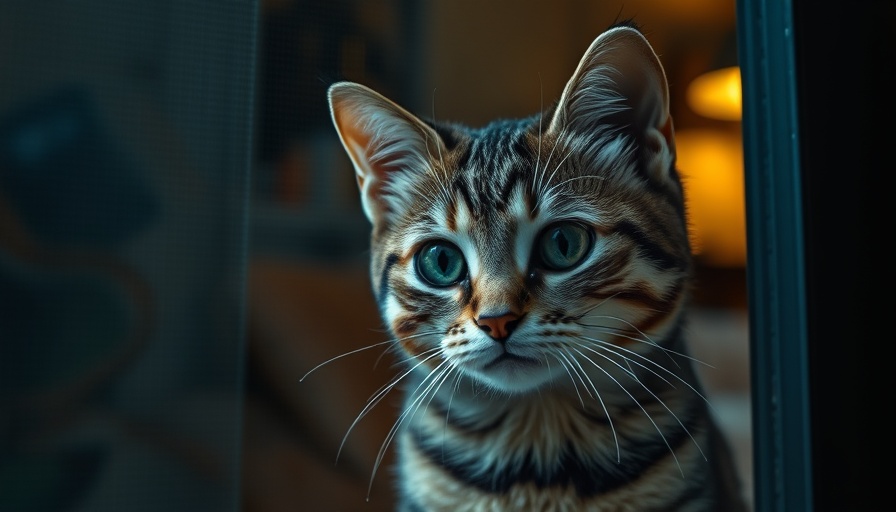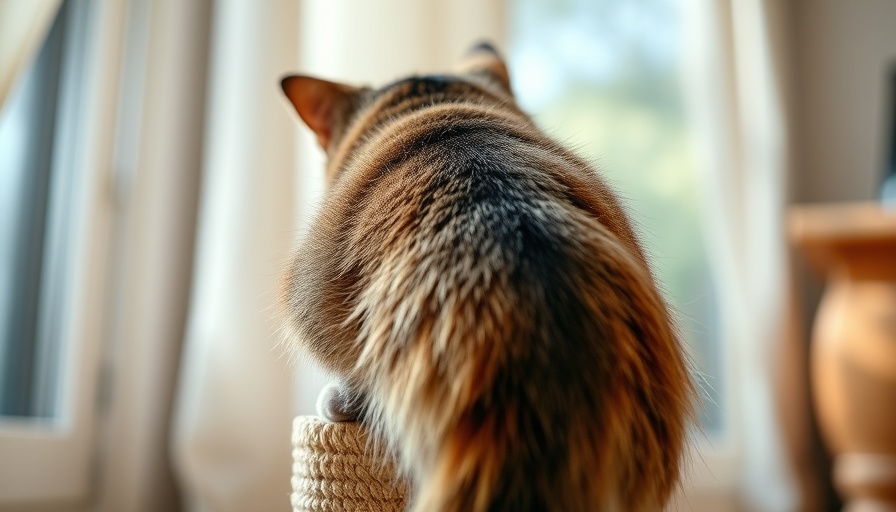
Understanding Cat Behavior: The Importance of Engagement
When leaving your cat home alone, engaging their curious nature is paramount. Cats are not just pets; they are intricate creatures with instincts that drive them to explore and play. Without stimulation, boredom can lead to destructive behaviors, often seen as mischievous by owners. To prevent these behaviors, owners must ensure their feline friends have plenty of entertainment options. Puzzle feeders and self-moving toys can replicate natural hunting scenarios, keeping your cat mentally stimulated. Incorporating these elements means not just avoiding messes, but also contributing to your cat's overall wellbeing.
In 'Never Do These 8 Things When Leaving Your Cat Alone', the discussion dives into essential tips for cat safety. We’re breaking down its key ideas while adding our own perspective.
Safety First: Managing the Environment
Leaving your home unprepared for your feline explorer can create dangerous situations. For instance, breakable items might transform into playthings, posing a risk of injury. Cat-proofing your living space means ensuring that potentially hazardous items are out of their reach. This involves a keen understanding of their playful nature and anticipating where accidents could occur. Remember, a small oversight can lead to severe consequences, including cuts or even severe gastrointestinal issues resulting from ingestion.
Hydration: The Lifeline for Cats
Hydration is another crucial aspect of care that often gets overlooked. A cat's hydration needs might vary, and providing multiple sources of water ensures they have access. If your cat prefers moving water, consider a fountain that encourages drinking. Dehydration can quickly become a serious health issue, leading to grave consequences. By offering various water stations around your home, you not only prevent dehydration but also promote independence in your pet’s drinking habits.
Nutrition: Access to Food is Life or Death
Feeding practices while you are away require special attention. Ensure your cat has reliable access to fresh food. Automatic feeders can be beneficial for short outings, but veterinary experts often recommend the personal touch of a sitter for longer durations. Neglecting meal schedules can induce stress in cats, leading to dangerous health risks, such as hepatic lipidosis. As responsible pet owners, advanced planning is non-negotiable; a skip meal can trigger a quick decline in unexpected ways.
Environmental Controls: Temperature Matters
Keeping your surroundings comfortable is as essential as entertaining your kitty. Extreme temperatures can pose severe threats to their health. Whether too hot or too cold, inconsistent conditions can lead to potentially life-threatening situations. A consistent indoor temperature is essential—ideally between 60°F and 75°F. Small investments, like ensuring HVAC systems operate even while you are away or providing a cozy corner for colder months, can drastically improve your pet's comfort.
Preparing Your Home: The Final Checklist
Before stepping out, conducting a thorough walkthrough can mitigate many risks. Look at potential hazards—ensure open doors are secure, and check that all toys and dangers are out of reach. By establishing these habits, you ensure their safety during your absence. Establishing routines not only protects them but gives peace of mind, letting you enjoy your time away without worrying about your feline companion.
Leaving your cat alone may seem harmless, but small mistakes can lead to significant problems. If you're a feline parent, ensuring their safety should never take a backseat to convenience. To strengthen your bond and give your kitty the best, implement these strategies that encourage a safe, entertaining, and loving home environment.
 Add Row
Add Row  Add
Add 




 Add Row
Add Row  Add
Add 


Write A Comment